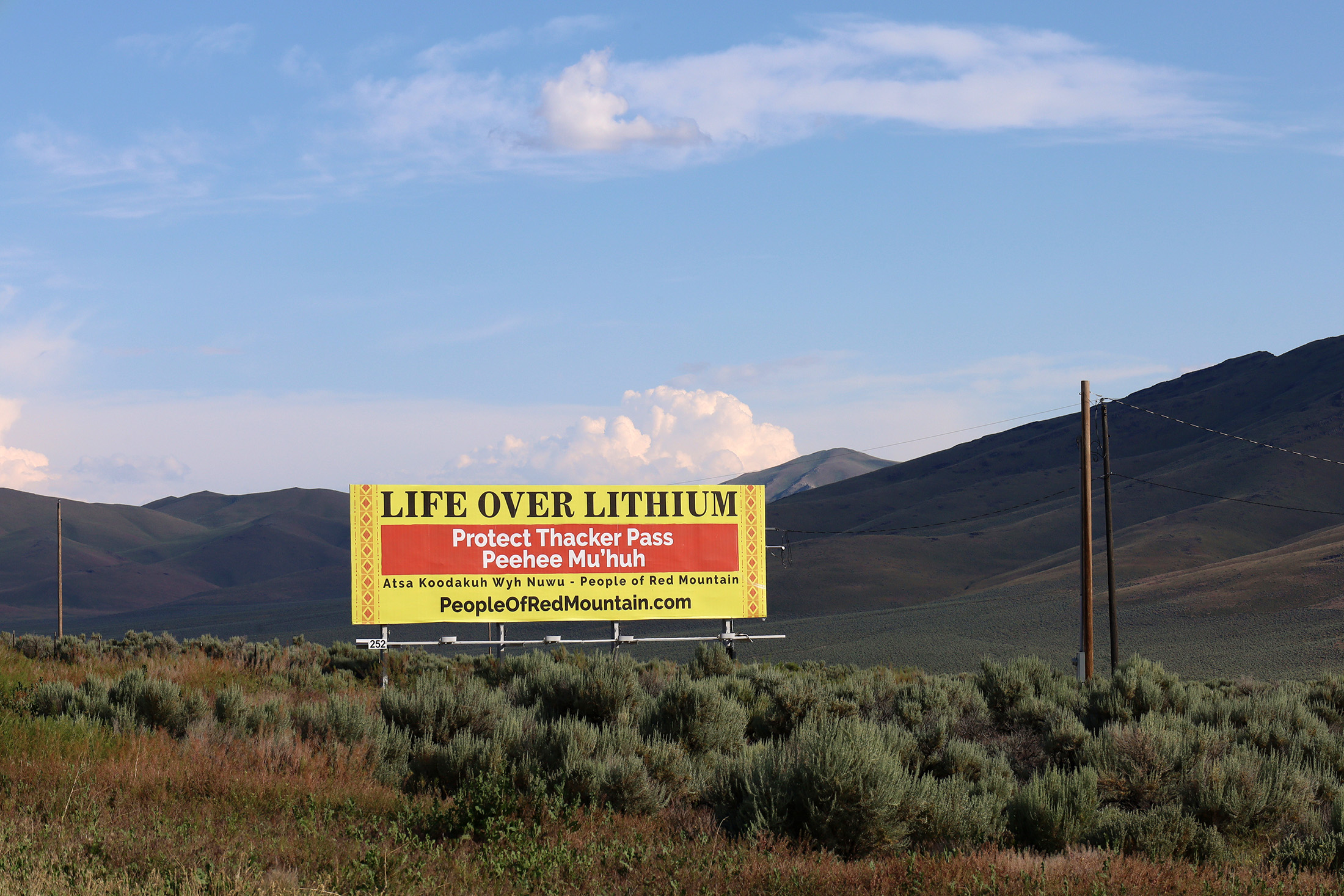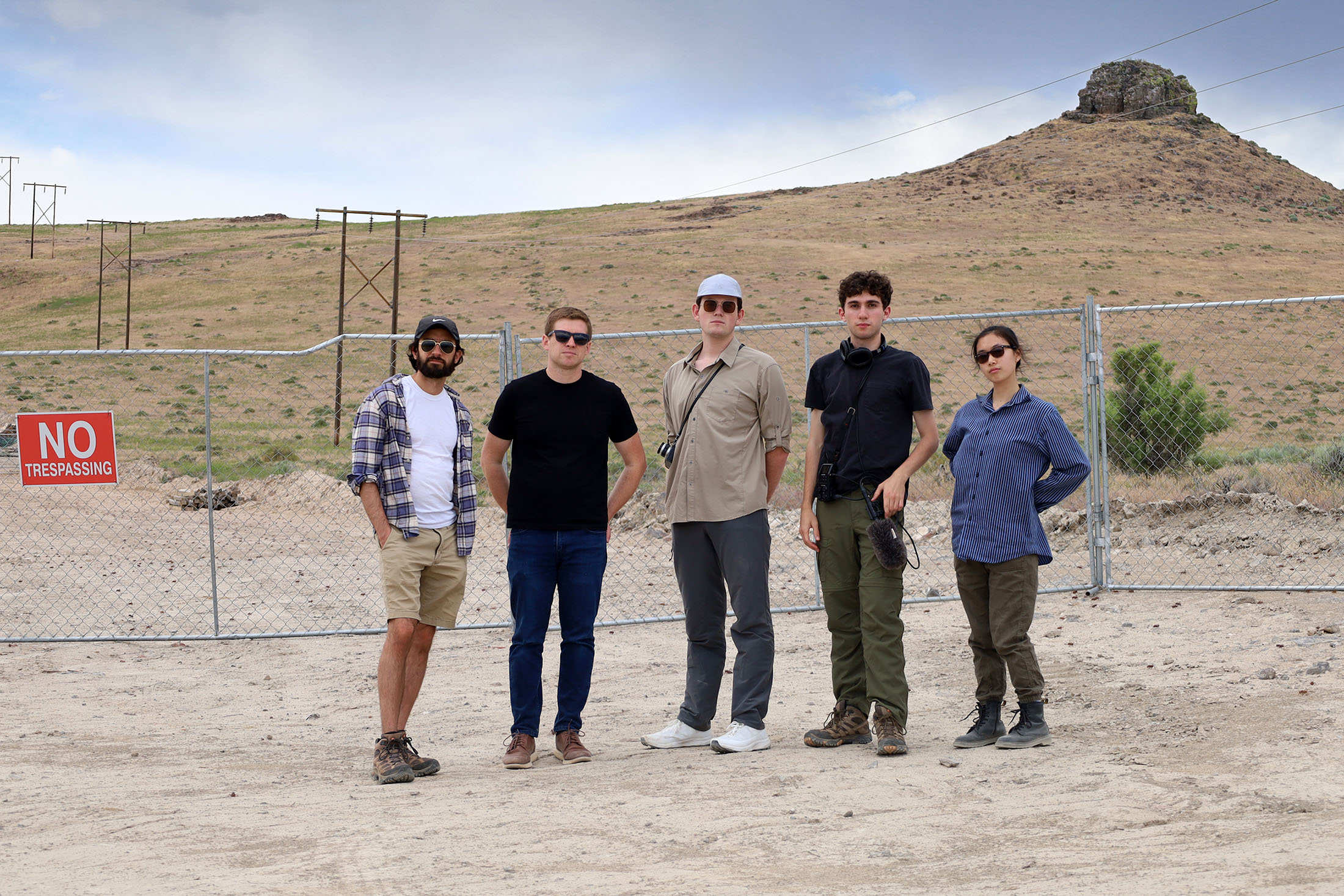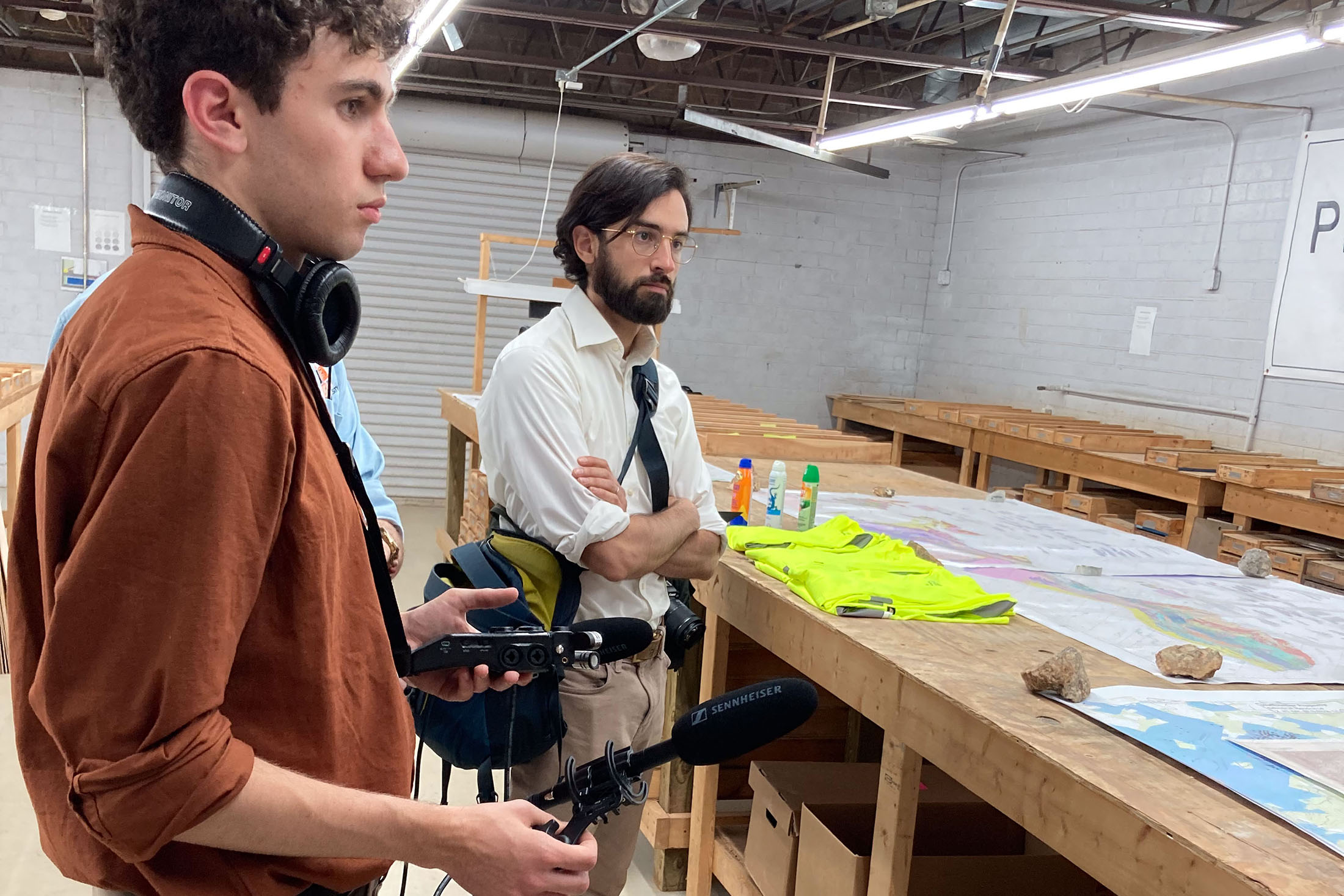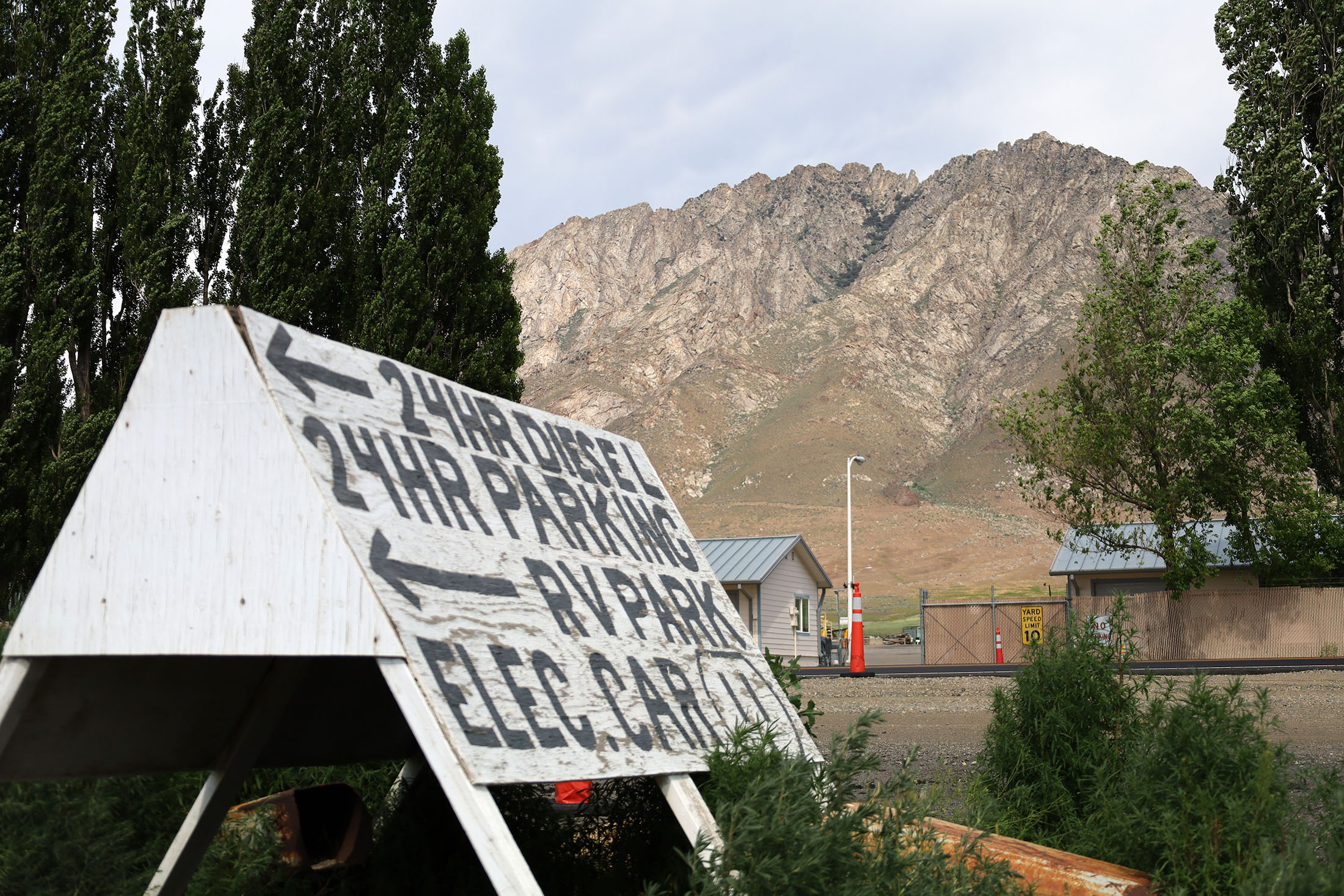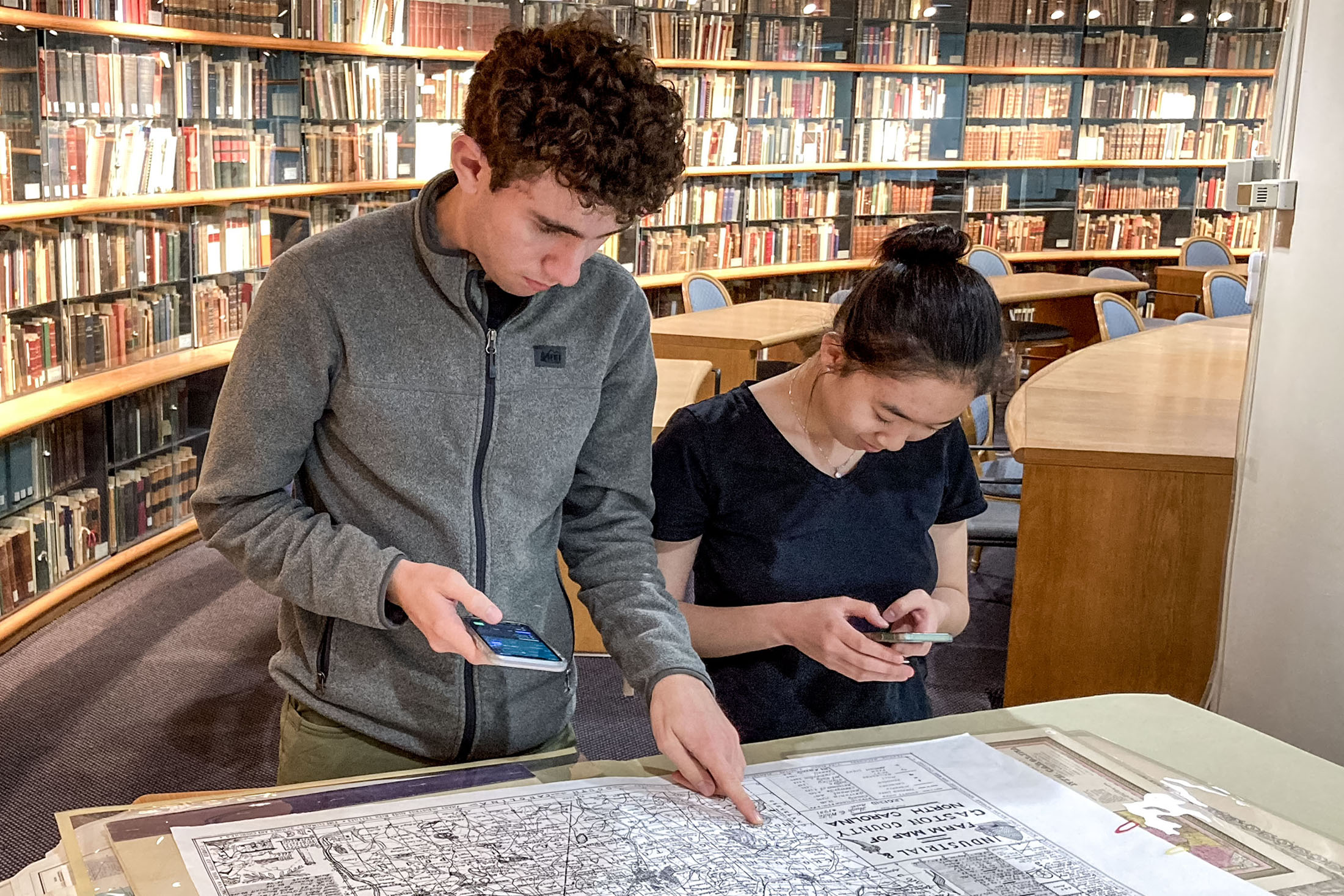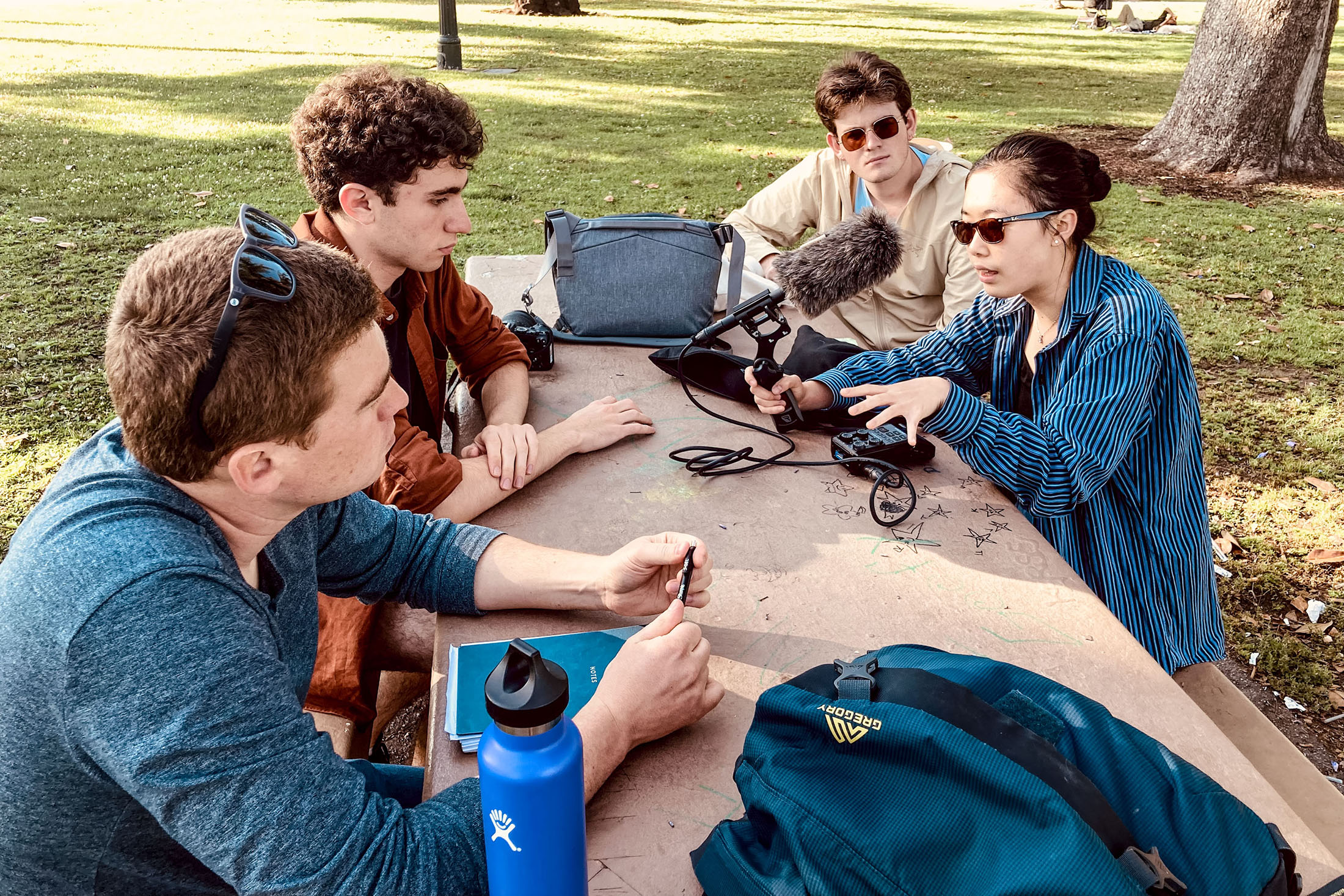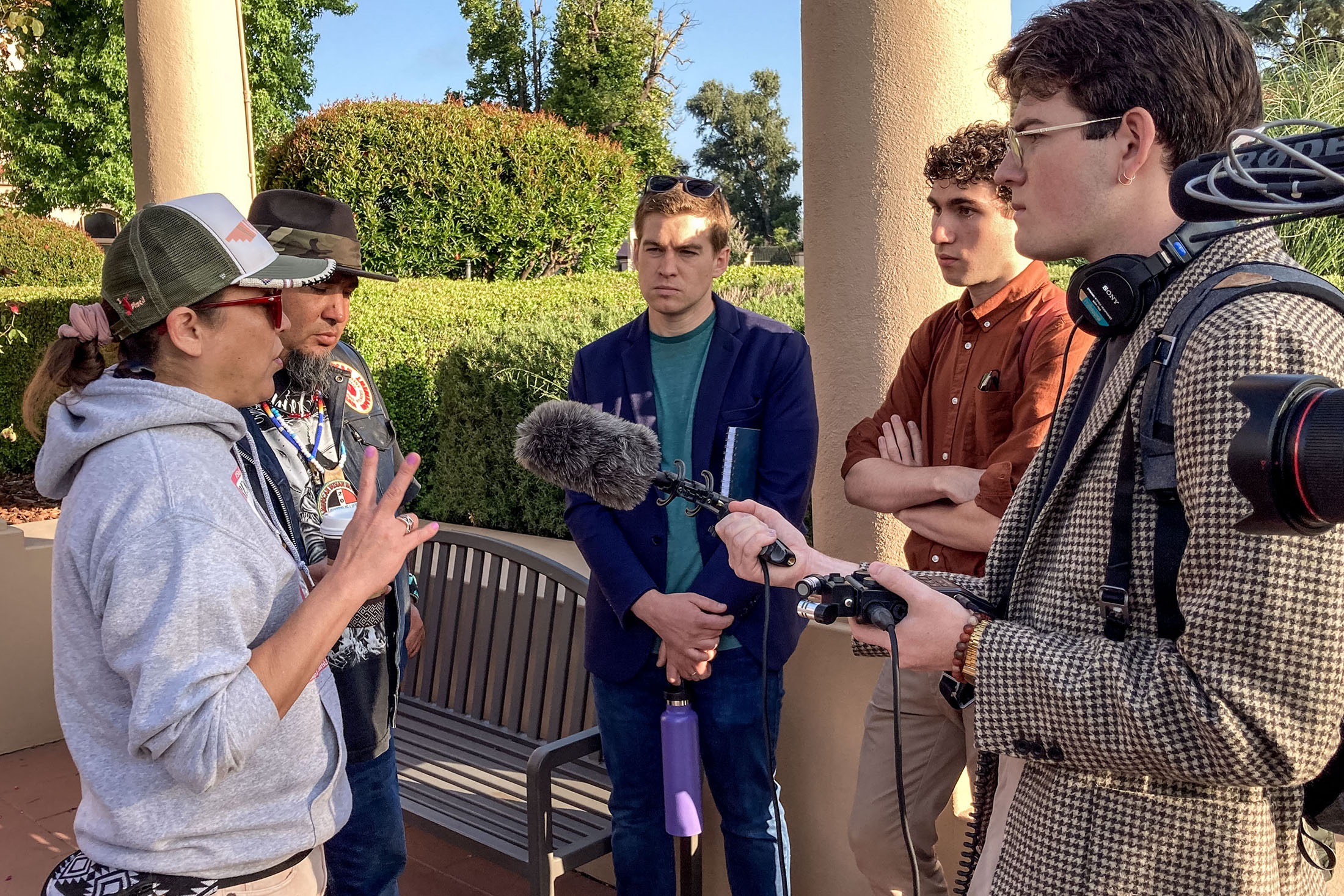
Over summer 2023, Alex Norbrook '26 worked as a Blue Lab intern supported by the High Meadows Environmental Institute (HMEI). He has contributed to an audio story series for the lab's ongoing project "Mining for the Climate," which is led by postdoctoral fellows Nate Otjen, Juan Manuel Rubio and Jessica Ng. The first season of the audio series will be released winter 2024.
In his story for Nassau Weekly "What We Lose to Lithium," Alex recounts experiences from his Blue Lab summer fieldwork and reflects on the implications of and oppositions to mining for lithium, an element used in batteries that has been defined as a critical mineral for decreasing dependence on fossil fuels.
What we lose to lithium
Story excerpt by Alex Norbrook '26
Under a blazing summer sun in Nevada, bulldozers graze on precious sagebrush, kicking up smoke that curls skyward in their wake. Trucks race by, carrying workers on a mission. A line of barbed wire fencing slices through the expansive terrain. Here, a mine is taking shape, one that will extract and refine millions of tons of rock from the largest lithium deposit in the country. The operators of the lithium mine are part of a lumbering national policy program aiming to provide battery materials for the nation’s energy transition. The Biden Administration hopes to deploy millions of electric vehicles (EVs) to slash carbon emissions in the transportation sector. For their mission, they need this mine.
Standing outside the fence, beside a “No Trespassing” sign, I peered into the mine site as part of my work on an internship that examined the push for lithium production. During two weeks of fieldwork, what I saw here and elsewhere worried me. To hasten the fight against the climate crisis, many policymakers are beginning to accept policies that will sacrifice a few to protect the many—including at this lithium mine. Some sacrifices may be necessary, especially given our short time frame to act. This reality, then, presents us with some hard questions: How do we decide what, and who, to sacrifice? Who will we let decide the victims of these sacrifices?
The Vice President of Government Affairs and Community Relations Corporate Communications for Lithium Nevada, a man named Tim Crowley, wants to build a school. Not just any school: 15 to 20 million dollars for sparkling classrooms, a brand new gym, a computer lab kitted out with the latest electronics, and new facilities for teachers. Lithium Nevada plans for the school to replace an old building complex along the main highway that traverses Orovada, a small community in Nevada’s mountainous northern dry landscape.
The school is just one example of the community benefits that Lithium Nevada prides itself on providing while the company assembles what will be one of the nation’s largest lithium mines. The mine is 25 minutes away from Orovada’s center, located in a sloping descent between two hills called Thacker Pass, known as Peehee Mu’huh to the local Paiute Shoshone communities who commemorate two massacres there. Lithium Nevada has continued construction without interruption since March, despite three lawsuits which proceeded through both state and federal courts. (The first lawsuit, put forward by local Indigenous tribes, alleged that the Bureau of Land Management (BLM) failed to consult their tribes properly before approving the mine. A coalition of environmental nonprofits filed the second, claiming deep insufficiencies in the mine’s Environmental Impact Statement. A local rancher filed the third lawsuit, alleging that the mine will irreparably deplete the water on his ranch).
For centuries, mining has been a destructive activity. Communities living near mines have faced challenges of pollution from chemically-intensive mining processes, violence from mine workers, and repression when they raise concerns. But Lithium Nevada claims its practices will depart from these long histories of harm. That involves consultation with their surrounding communities.
Crowley seemed proud of his company’s efforts to engage local residents, despite much opposition from Orovada’s community. In an interview, he went to great lengths to highlight the company’s deep and sustained consultation with nearby communities who will be affected by the mine. “We’re working really, really hard to make sure that we actually provide a net benefit to the surrounding areas,” Crowley said. “We started with engagement over a decade ago, and that hasn’t stopped. It’s never gonna stop.”
Part of that dialogue, according to Crowley, involves providing benefits to the communities, Indigenous and non-Indigenous, living nearby. The school is one of many benefits Lithium Nevada wishes to implement. They’re also repaving and expanding the roads near the mine site to prepare for when the mine’s heavy-duty trucks begin to roll through Orovada. They’re bringing job training, a new community daycare facility, and a plant nursery to the nearby Fort McDermitt Paiute and Shoshone Tribe. “At the root of all of this engagement is empathy,” Crowley told me. “If you can’t empathize with the communities and their needs, you are going to struggle to figure out how to accommodate them.”
This narrative, in which mining companies engage with and provide benefits to local communities, represents a broader shift in tone from industry and government leaders as they craft climate policy. These leaders see community-conscious policies as a way to modernize mining activity, as Biden recently alluded to when announcing new funds for lithium mines. He called on mines to benefit local communities and “avoid the historical injustices that too many mining operations left behind in American towns.” Lithium Nevada’s decision to build the new school in Orovada seems to embody Biden’s charge.
But what if the community didn’t want the new school in the first place? What would that say about how companies like Lithium Nevada undergo community engagement?

